Synthetic fabrics are all the rage these days. Gone are the days when cotton and linen were the only fabrics around.
Blended and synthetics make up the majority of the clothes in your wardrobe. And while pure synthetics are limited to certain items of clothing, they still need a washing program of their own.
Your synthetic wash is a program in many washers for synthetic fabrics such as polyester, rayon, nylon, and acrylic. These fabrics are thin, repel moisture and stains, and don’t require a lot of agitation or spinning to get them cleaned up in the washer.
If you have never used the synthetic cycle on your washer, you’re missing out. It’s a gentle cycle that uses less water and consumes even less energy.
Read more to find out all about the synthetic wash cycle and how best to use it to remove stains from different synthetic fabrics.
What is the Synthetics Wash?
Synthetic wash, as the name implies, is designed specifically for synthetic fabrics. If you check the label of most of the clothes in your wardrobe, chances are you’ll find a small or large percentage of them containing polyester, acrylic, nylon, or rayon.
Many undergarments are made of synthetic fabrics as well.
In general, such fabrics don’t retain moisture the same way cotton or linen fabrics do. They also repel stains and are easy to clean.
These qualities of synthetic fabrics reflect on the synthetic wash cycle itself. It’s a gentle cycle with the bare minimum of agitation.
Water temperatures rarely go above warm levels, and spinning is on the low side between 600 and 800 RPM.
The synthetics wash program doesn’t take long to finish either. In some washers, it wouldn’t take more than 40 minutes.
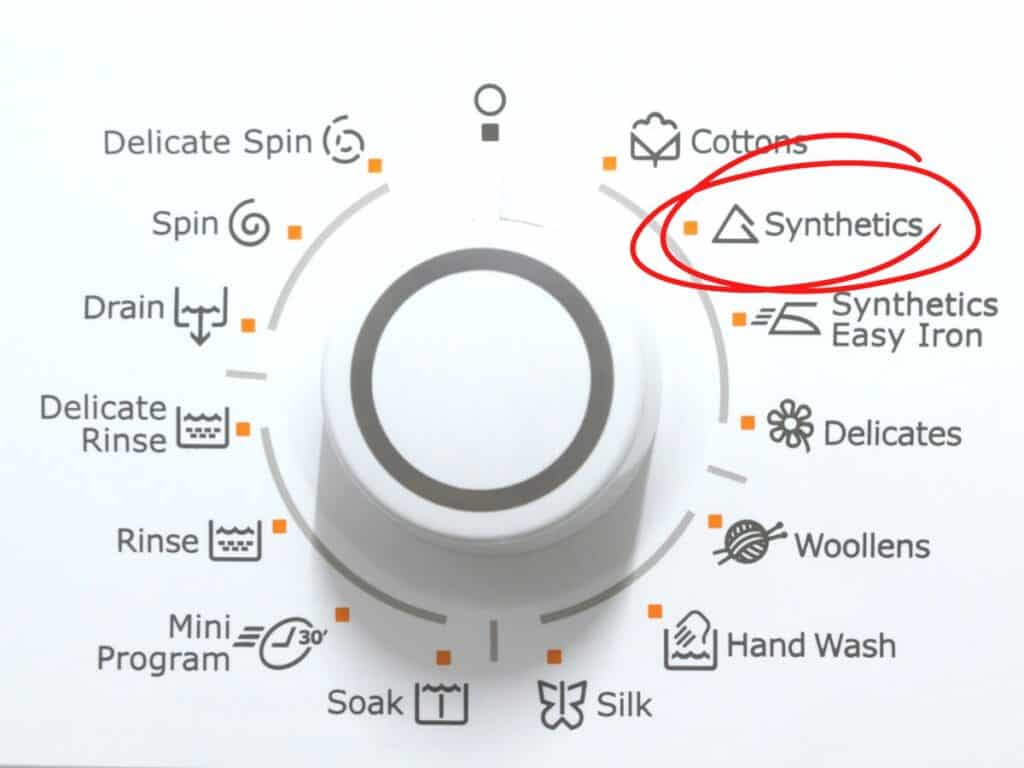
Other washers might keep the fabrics in the water a little longer than that. But almost all washers agree that excessive agitation is not necessary when washing such fabrics.
All of this points to the fact that the synthetic wash program is an eco-friendly one as it conserves water and energy consumption.
As such, it’s only suitable for thin and light clothes made of polyester and other synthetic materials.
How to Use the Synthetic Wash Cycle with Synthetic Fabrics
Before you use the synthetic wash cycle, you need to separate synthetics from natural fiber materials such as cotton and linen.
Keep in mind that synthetics are not the same as delicate fabrics. Silk, satin, and cashmere are delicate fabrics. They have their own delicate cycle, which I talked about in a separate post.
Synthetics are different materials made from plastic and other oil products. They include but are not limited to polyester, vinyl, rayon, rubber, acrylic, olefin, acetate, and nylon, among others.
Each one of those synthetic materials has its own specific instructions when it comes to removing stains.
So once you have your synthetics sorted out in a pile, you need to go through them and group them by type as well.
Here are the main synthetic types and how to use the synthetics cycle to wash them.
Acrylic
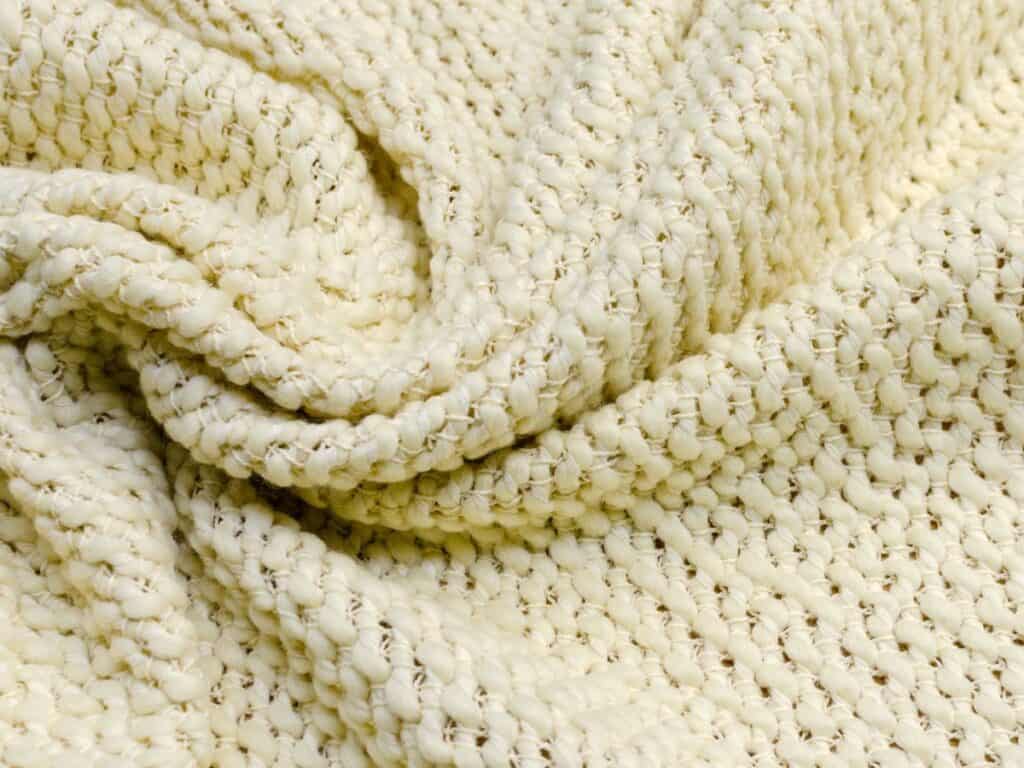
Although not as popular as polyester or nylon, acrylic still goes into a lot of fabrics and clothes that you use every day.
Because it’s easy to shape and process, acrylic is often blended with wool to make jackets, sweaters, and microfiber fleeces.
It’s also an essential material in towels and washcloths because of its softness.
When acrylic makes up most of the material in the jumper or towel, you need to treat such items as a synthetic fabric and not as a blended one.
That means you should use the synthetic wash cycle with acrylic fabrics. However, before you do that, you need to make sure that the fabric doesn’t have heavy stains on it.
Because of the gentle nature of the synthetic wash cycle, tough stains on acrylic will pass through the wash and dry cycles and persist after the fabric is dry.
Acrylic also doesn’t handle high water temperatures and is easy to damage. So make sure that you treat the stains with a mild stain remover, such as white vinegar.
One tablespoon of white vinegar in two cups (400 ml) of lukewarm water will get the job done.
I recommend skipping the dry cycle altogether and hanging the acrylic fabric out to dry. It doesn’t absorb water that well and will dry fast.
The heat in the dryer could ruin the texture and design of the acrylic item of clothing.
Nylon
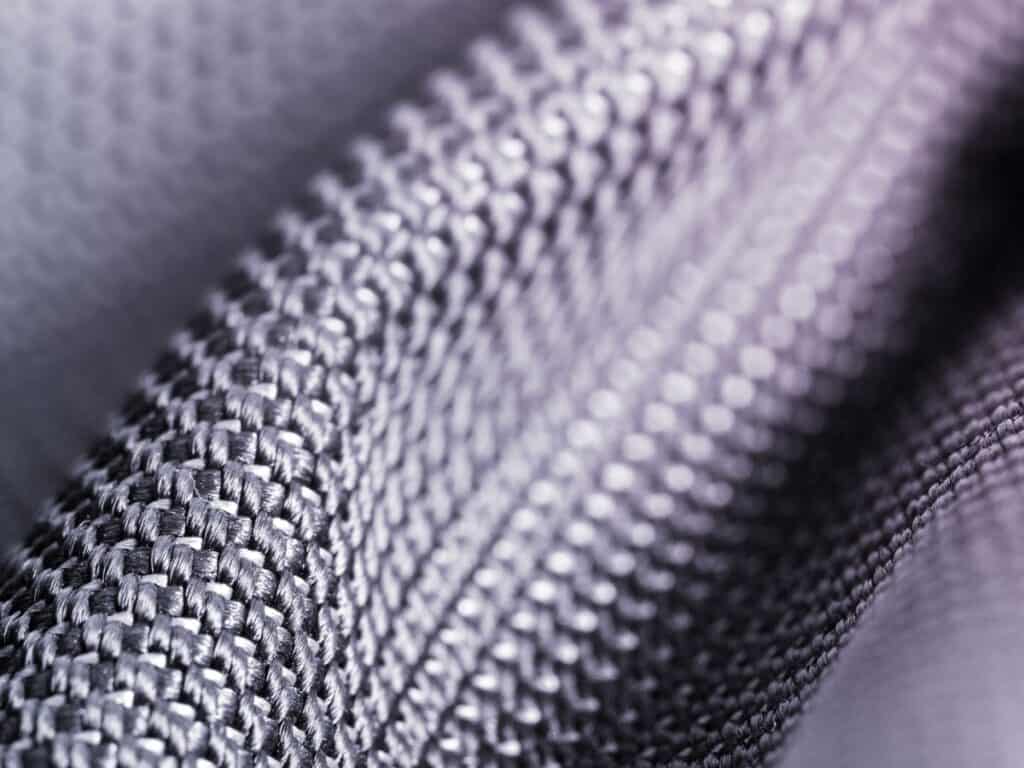
Nylon is quite popular in lingerie. It has a silky feeling, is quite durable, and can be pretty light and thin without tearing easily. Moreover, nylon is easy to dye and maintains the real hues of the colors.
For all of these reasons, tights, leggings, and lingerie made of nylon are quite popular.
But there are other practical aspects of using nylon in such delicate items of clothing. Like many other synthetics, it repels stains and moisture, which makes cleaning it a breeze.
You might be tempted to hand wash nylons instead of tossing them in the washer. The fabrics seem flimsy.
But with the synthetic wash cycle, you have nothing to worry about. The washer will cradle the lingerie with the same gentleness as your hands.
Nylon stains are also easy to remove. Most often, you won’t have to bother pre-treating the stains since they will come off during the wash cycle anyway.
But if you’re dealing with tough stains, then two teaspoons of dish soap diluted in two cups of warm water should help you get the stains out within a few minutes. Rinse the nylon garments before putting them to wash.
To further protect the nylon lingerie against snags and the rough treatment of the tub, place them in a mesh bag and zip it closed.
Lingerie dries easily and quickly as well. Even if you don’t have a place outdoors to dry your clothes, hang the lingerie on a hanger in a doorway or near an open window.
That way, you’ll save them the heat and fast spinning of the drum.
Polyester
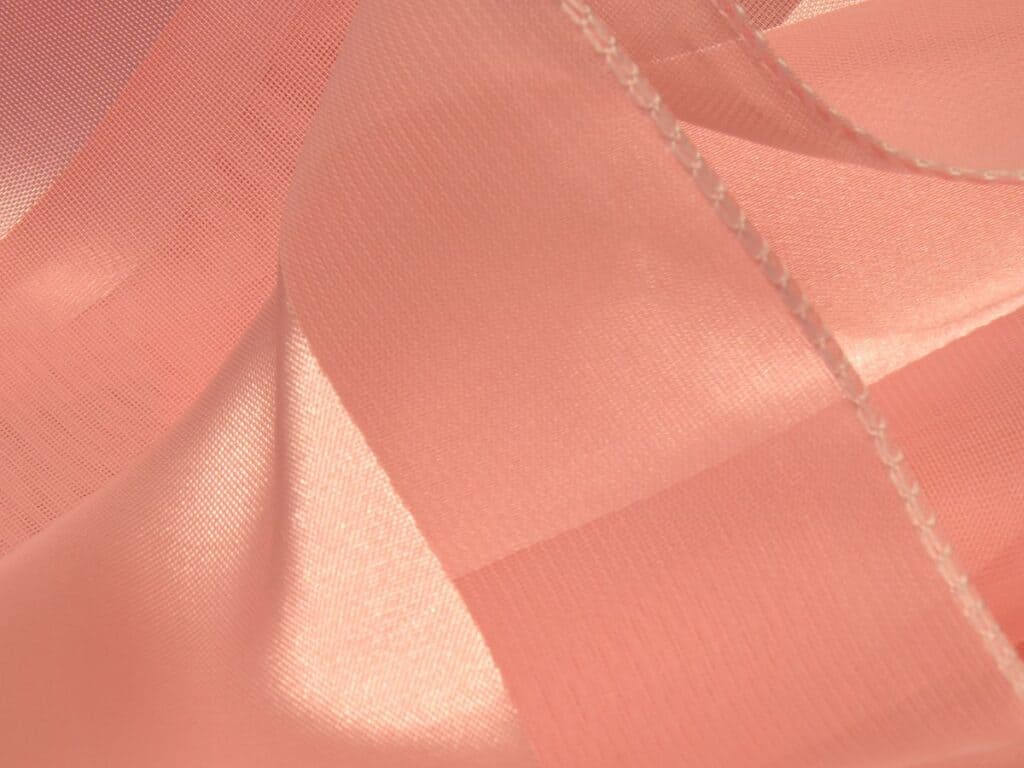
Polyester became the de facto fabric that goes into everything from garments to drapes, rugs, and even cushion stuffing.
The material is so flexible and malleable that it can be shaped into anything. Threads, dense fabrics, or thick layers, polyester is the ultimate crowd-pleaser.
It’s no surprise then that you can pick up any garment and read on the label that it has 90 percent polyester or 70 percent polyester.
It blends well with natural fabrics such as cotton. And when you check your pillow, most likely, the stuffing will be polyester.
That doesn’t mean that any garment with polyester in it (which is like 90 percent of the clothes in your wardrobe) should be washed with the synthetic wash cycle.
The rule of thumb is that if the item of clothing has 90 percent or more polyester, then it’s considered synthetic fabric. Anything under that is considered blended, which has its own washing cycle.
As with other synthetics, you’ll need to treat tough stains in polyester garments before you put them in the washer.
Oil and grease stains, in particular, are pretty tricky to remove without the help of a stain remover.
You can use a baking soda and white vinegar combo to remove such stains. Then rinse thoroughly and wash the polyester fabrics in the synthetics wash cycle.
Rayon
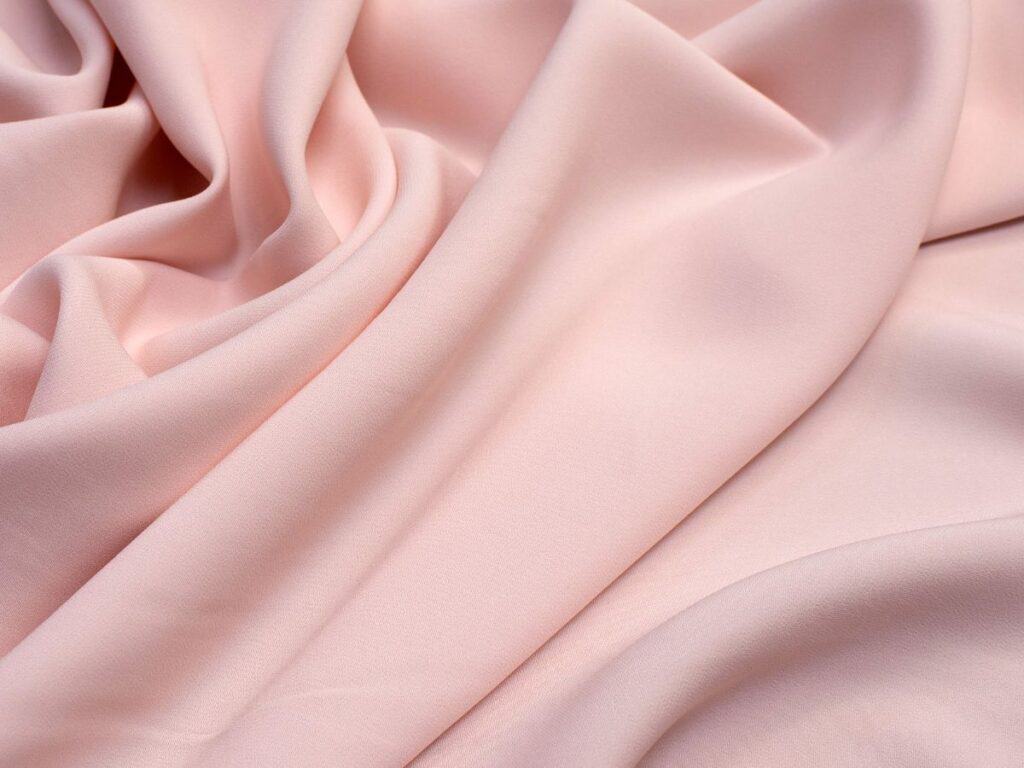
Rayon is an umbrella term that refers to a wide variety of synthetic fabrics that originate from cellulose which comes from wood pulp.
Cellulose is treated with chemicals that change its structure and make it more durable. This is why rayon fabrics are considered synthetics. They include viscose and modal.
The problem with rayon is that it’s not easy to wash at home. Most rayon garments will require professional cleaners or dry cleaners to handle them.
Moreover, those Rayon fabrics that allow you to wash at home should be washed by hand and never thrown in the washer. That’s how sensitive these garments are.
On the off chance your rayon garment is blended with other synthetics; you could wash it under the synthetics wash cycle.
Just remember to stick to warm water temperatures.
Olefin
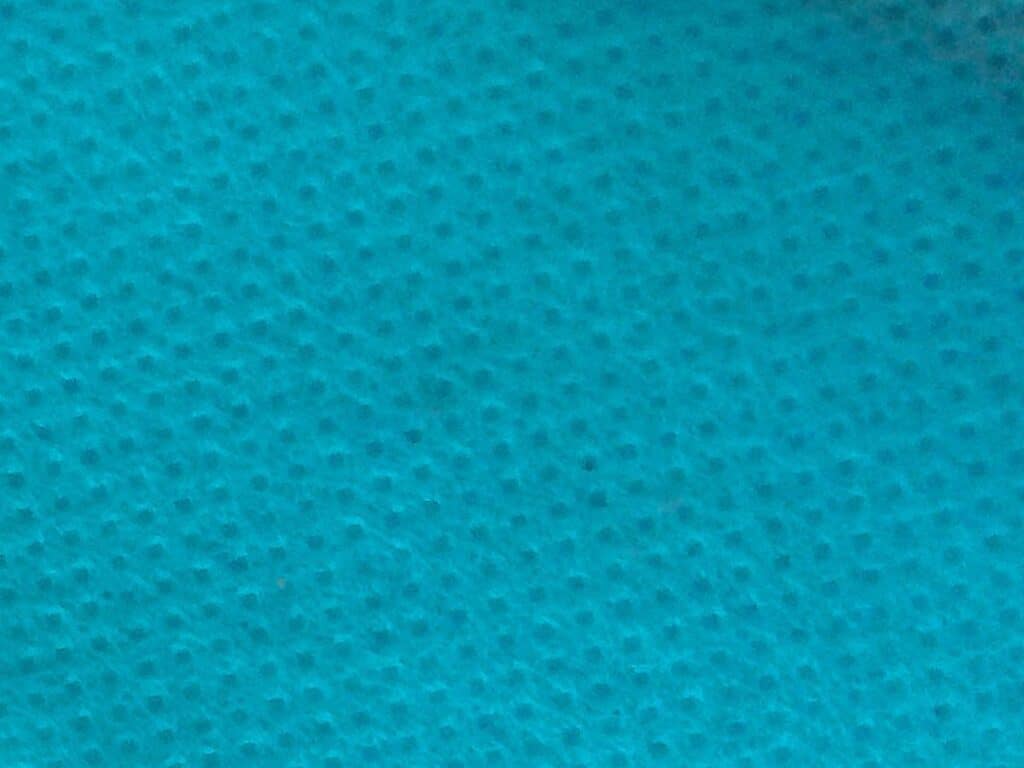
While polyester and even rayon are widely available in the market, olefin takes up a niche of its own.
It’s a synthetic fabric made from a blend of polypropylene and polyethylene fibers. The formula is trademarked, but it’s still less costly than other synthetics.
The advantage olefin has over other synthetics is that it’s easy to shape into different textiles. It goes into carpets, quilts, duvets, and even socks.
The two things to remember when washing olefin fabrics are that the water temperature should be warm at all times and that you should not use strong stain removers or heavy-duty detergents with it.
I also recommend that you don’t tumble dry it since the heat of the tub can ruin the material.
Hot Tips for Using the Synthetic Cycle
It goes without saying that synthetic fabrics are different from other materials such as cotton, wool, and linen. As such, you should treat these garments with extra care, especially when you want to wash them.
The following tips will help you protect your synthetics against damage from the washer, detergents, the dryer, and harsh chemicals in stain removers.
- Don’t Overwash: Synthetics don’t get soiled as easily as other natural fabrics. They repel stains and moisture easily, which makes washing them regularly redundant.
- Air Out: Avoid tumble drying the synthetics to protect them against the excessive heat of the tub. These garments dry out quickly without even the need to put them out in the sun.
- Cold Temperature: I mentioned above that the synthetic wash cycle sticks to warm water temperatures and nothing more. In general, that averages about 86 degrees F. Most washers will not exceed this gentle water temperature.
- Low Spin: If the synthetics cycle lets you customize the spin speed, bring it down to the lowest speed setting available. The less spin speed, the gentler the wash cycle will be to prevent the shedding of microfibers.
- Full Loads: This tip applies to all types of clothes and not just to synthetics. Running the washer on less-than-full loads increases the friction and tossing about of the clothes inside the tub. This can cause damage to sensitive fabrics such as synthetics.
Always wait until you have a full load before firing up the washer. - Mesh Bags: Mesh bags are indispensable when it comes to washing synthetics. Separate your pile of synthetics into smaller piles by type of fabric. Then put each pile in a mesh bag. This reduces friction and keeps the fabrics intact.
- Mild Detergent: Always err on the side of caution when it comes to laundry detergents. Choose mild detergents and use less than the recommended dose.
Synthetics don’t require a lot of chemicals to get them cleaned up. - Liquid Detergent: Don’t use powder detergents since they can take time to dissolve in water, and the grains could damage the synthetic fabrics. Use liquid detergents instead.
- No Fabric Softener: Synthetics don’t lose their soft textures when washed. So using fabric softeners is redundant. Moreover, the chemicals in the fabric softener can cause damage to the fabrics.
- Use Filters: Synthetics are known to shed microfibers after every wash. Those microfibers are so tiny that they can lodge themselves in the internal parts of the washer. The filters in the washer do little to catch those microfibers. So use extra filters to protect the washer itself.
Conclusion
Synthetics are fabrics made with the help of chemicals and either come from oil products or treated wood pulp.
Synthetics go into different fabrics, including lingerie, carpets, duvets, blankets, socks, and even curtains.
The synthetics wash cycle is designed to treat synthetic fabrics with extra care. The water temperature doesn’t go above 86 degrees F, and agitation is at a minimum.
Avoid tumble-drying synthetics to prevent damage and microfiber shedding.
I’ve created a comprehensive guide on how to use all the settings on your washing machine that may interest you to read next.

I’m an expert wardrobe organizer and a bit of a clean freak. I created this website and its YouTube channel to share practical guides about laundry and organizing. My teachings have been featured in multiple large news publications, and I’ve self-published two wardrobe organizing books and an entire course on the subject.

